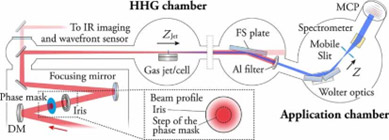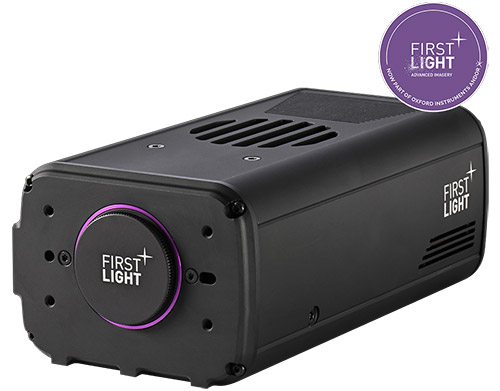Resources
 Part of the Oxford Instruments Group
Part of the Oxford Instruments Group
Expand
Collapse
 Part of the Oxford Instruments Group
Part of the Oxford Instruments Group
High Harmonic Generation (HHG) sources have been around since the late 1970’s, however, in recent times there has been significant steps in performance, smaller footprint and costs decrease that have made HHG sources increasingly attractive for laboratory-based UV and soft X-Ray generation for attosecond physics. HHG is a non-linear process where a target is illuminated by an intense laser pulse, followed by the target yielding high harmonics of the source beam. This emitted light is in the photon energy range of 1 – 500 eV which falls in the UV and soft X-ray area of the spectrum.

Various wavelength of driving lasers can be used to drive HHG. These are often from 800 to 2100 nm. There is often a need to carry out diagnostics on the initial driving laser and there are also opportunities to use this driving laser for imaging as well. With the 800 to 2100 nm wavelength range falling in the infrared spectrum, cameras specifically designed for infrared detection are required for these applications. Modern HHG sources run at repetition rates of 10’s Hz up to 10’s kHz. This requirement leads to high-speed imaging requirements to understand beamline dynamics.
InGaAs detector technology is at the forefront of SWIR detection. This technology offers high QE and high frame rates to meet the diagnostic and imaging needs of modern HHG setups. Furthermore, the wavelength detection range can be tuned to cover a specific range of the infrared spectrum to match the photon wavelengths of the driving laser.

Andor strongly recommends the C-RED 2, C-RED 2 Lite, C-RED 3 For driving laser monitoring and imaging and the C-RED 2 ER For driving lasers up to 2.2 µm in wavelength at HHG facilities:
| HHG Infrared Imaging Requirement | HHG Infrared Imaging Solution |
| Driving laser diagnostics | Both the C-RED 2 and C-RED 3 ranges are suited for NIR/SWIR laser diagnostics. Which camera to use in the experiment depends on the exact driving laser wavelength. Both camera ranges offer up to 600 fps imaging with the C-RED 2, C-RED 2 Lite and C-RED 3 optimised for 0.9 – 1.7 µm and the C-RED 2 ER optimised for 1.1 – 2.2 µm. |
| High frame rates to match sources | With frame rates up to 600 fps for full frame imaging, The C-RED 2 and C-RED 3 ranges offers significantly higher frame rates than traditional CCD detectors and many sCMOS detectors. This allows faster detection to match the repetition rate of modern laser sources. |
| Infrared imaging | Some HHG experiments also use the initial driving laser arrangement for infrared imaging of samples. As well as offering diagnostic capabilities, the versatile C-RED 2 and C-RED 3 ranges offers the functionality of imaging these samples in the infrared meaning one detector can be used for multiple diagnostic modalities. |
Date: October 2024
Author: Dr Joe Brennan
Category: Solution Note
